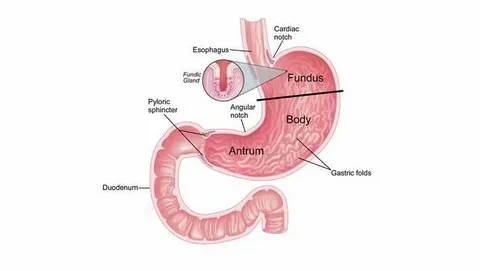Gastroparesis is a habitual condition that affects the stomach’s capability to clear its contents, leading to a range of digestive issues. For those diagnosed with gastroparesis, managing the condition frequently requires significant salutary variations. Understanding what foods to include and avoid can make a pivotal difference in easing symptoms and icing proper nutrition. This composition will give an in- depth look at the gastroparesis diet, including practical tips for mess planning and medication.
What’s Gastroparesis?
gastroparesis diet occurs when the stomach’s muscles do n’t serve effectively, performing in delayed gastric evacuating. This condition can lead to colorful symptoms, including
Nausea and puking
Abdominal pain and bloating
Early malnutrition( feeling full after consuming only a small quantum of food)
Weight loss and malnutrition
Common causes of gastroparesis diet include diabetes, certain specifics( similar as opioids), neurological diseases, andpost-surgical complications. Since the symptoms can significantly impact diurnal life, numerous cases find that salutary changes can help manage their condition effectively.
Salutary Guidelines for Gastroparesis
Managing gastroparesis diet frequently revolves around salutary adaptations designed to grease digestion. Then are some essential salutary guidelines to consider
1. Prioritize Low- Fiber Foods
High- fiber foods can be challenging for those with gastroparesis because they take longer to digest and may lead to bloating or discomfort. rather, concentrate on low- fiber options that are easier for the stomach to reuse.
Recommended Low- Fiber Foods
White rice, pasta, and chuck
Well- cooked vegetables( e.g., carrots, zucchini) without skins
Canned fruits in saccharinity or juice( without seeds or skin)
Tender flesh, similar as funk, lemon, and fish
Dairy products, including yogurt and rubbish
. Incorporate fluently Digestible Foods
Soft and fluently digestible foods can reduce the workload on the stomach and minimize symptoms. conclude for refections that bear lower trouble to digest.
fluently Digestible Options
Smoothies made with yogurt or milk, fruits, and vegetables
Mashed potatoes or sweet potatoes
climbed eggs or omelets
mists and broths
Nut flannel ( in temperance)
3. Eat lower, More Frequent refections
rather of three large refections, aim for five to six lower refections throughout the day. This approach can help manage the quantum of food in your stomach at one time, making it easier for your body to reuse.
mess frequence
Consider having lower snacks between refections, similar as crackers, rubbish, or yogurt.
insure that refections are well- balanced and include a variety of nutrients to meet your salutary requirements.
4. Limit High- Fat Foods
Adipose foods can decelerate gastric evacuating and complicate symptoms of gastroparesis diet. It’s stylish to choose spare protein sources and avoid fried or slithery foods.
Recommended Low- Fat Protein Sources
Skinless funk or lemon
Fish( ignited or grilled, not fried)
Eggs( boiled or climbed)
Low- fat dairy products
5. Stay Doused
Hydration is essential, especially if you witness nausea or vomiting. still, it’s important to avoid consuming large quantities of liquids during refections, as this can contribute to a feeling of wholeness.
Hydration Tips
Drink water, herbal teas, or clear broths throughout the day.
Consider electrolyte-rich drinks if you come dehydrated.
Avoid carbonated potables, which can beget bloating and discomfort.
Foods to Avoid
While it’s pivotal to know what to include in your diet, it’s inversely important to identify foods that may worsen symptoms. Then are some common foods to avoid if you have gastroparesis diet
Foods to Avoid
High- Fiber Foods Raw fruits and vegetables, whole grains, nuts, and seeds can decelerate digestion.
Adipose Foods Fried foods, heavy gravies, and high- fat dairy products can delay gastric evacuating.
Spicy Foods Foods that irritate the stomach filling can complicate symptoms.
Carbonated potables These can beget bloating and discomfort.
Caffeinated potables Coffee and certain teas can increase gastric motility, leading to discomfort.
Meal Planning Tips
Plan Ahead Developing a daily mess plan can help insure that you have suitable options available. This medication makes it easier to stick to salutary guidelines and avoid foods that spark symptoms.
trial with Textures Soft, smooth textures are generally easier to handle. Blending or mincing foods can make them more digestible, similar as in smoothies or mists.
hear to Your Body Keep a food journal to track how different foods affect your symptoms. Everyone’s experience with gastroparesis diet is unique, so it’s important to identify what works best for you.
Consult a Registered Dietitian A registered dietitian specializing in gastrointestinal issues can give substantiated guidance and support acclimatized to your specific requirements.
Consider Nutritional Supplements If you struggle to maintain weight or meet your nutritive requirements, talk to your healthcare provider about nutritive supplements or mess relief shakes.
form Ideas for Gastroparesis Diet
Then are a many simple fashions to help you incorporate suitable foods into your diet
1. Delicate Vegetable Soup
constituents
1 mug low- sodium funk or vegetable broth
1 mug diced vegetables( carrots, zucchini, potatoes)
/ 2 mug heavy cream or a dairy volition
swab and pepper to taste
Instructions
In a pot, bring the broth to a pustule and add the vegetables.
Cook until tender, also blend until smooth.
Stir in the cream, season with swab and pepper, and serve warm.
2. climbed Eggs with rubbish
constituents
2 eggs
mug tattered rubbish( cheddar or your choice)
swab and pepper to taste
cuisine spray or a small quantum of adulation
Instructions
In a coliseum, whisk the eggs with swab and pepper.
toast anon-stick skillet over medium heat and add cuisine spray or adulation.
Pour in the eggs and cook, stirring gently. When they’re nearly set, add the rubbish and continue cooking until completely cooked.
3. Smoothie Bowl
constituents
1 banana
mug yogurt( Greek or regular)
mug milk or dairy volition
mug cooked oats( voluntary for texture)
Instructions
Blend the banana, yogurt, and milk until smooth.
Pour into a coliseum and top with cooked oats or fresh yogurt, if asked .
Conclusion
Living with gastroparesis can be grueling , but salutary variations can significantly ameliorate your quality of life. By fastening on low- fiber, fluently digestible foods, consuming lower refections, and staying doused , individualities with gastroparesis diet can manage their symptoms effectively. Understanding which foods to include and which to avoid is pivotal for successful mess planning. Always consult with a healthcare provider or a registered dietitian before making significant salutary changes, as they can give individualized recommendations acclimatized to your specific condition and nutritive requirements. With the right approach to diet operation, individualities with gastroparesis can enjoy a balanced and satisfying diet while minimizing discomfort and maximizing health.

